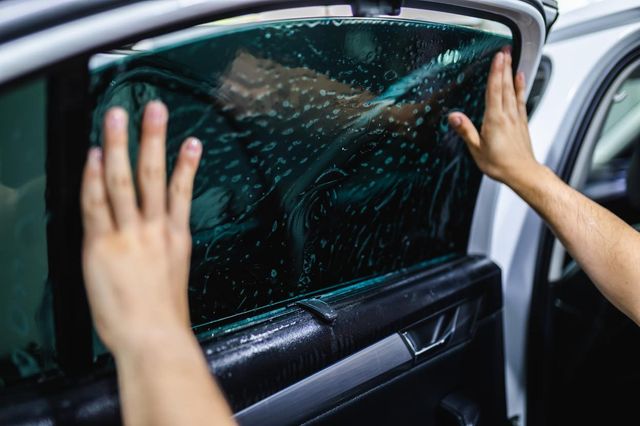Window Tinting Regulations and Standards: What You Required to Know Before Tinting Your Vehicle
Before continuing with window tinting for your vehicle, it is necessary to familiarize yourself with the diverse laws and standards that regulate this technique across different states. These regulations determine the permitted levels of tint darkness, commonly determined by visible light transmission (VLT) percents, and include specific terms for front windshields intended at ensuring road safety and security.
Summary of Home Window Tinting Rules
Window tinting laws are frequently based on variant across different territories, showing neighborhood regulations and safety considerations. These legislations dictate the allowable levels of color darkness and reflectiveness on lorry windows, making certain that chauffeurs keep adequate visibility while additionally safeguarding versus dangerous UV rays and heat.
Most guidelines classify window tinting based upon the Visible Light Transmission (VLT) percentage, which shows the quantity of light that can travel through the window. Generally, reduced VLT percents signify darker tints. Laws frequently separate in between the front, side, and back home windows, with stricter limitations used to the front windshield to boost safety and security for both the vehicle driver and other road customers.
Furthermore, some territories impose limitations on the reflectivity of the color, stopping excessive glow that can harm presence. Exceptions to these regulations might exist for individuals with specific clinical conditions needing additional sun defense. Compliance with window tinting laws is vital, as violations can result in penalties, mandatory removal of the color, and potential rises in insurance costs. It is necessary for car proprietors to acquaint themselves with local laws prior to continuing with window tinting installations.
State-by-State Color Rules
Recognizing the certain home window tinting regulations in each state is vital for lorry owners seeking to adhere to the legislation. Each state in the united state has developed its very own set of policies controling window tinting, which can differ dramatically. These regulations often dictate the allowable degrees of tint darkness, the types of home windows that can be tinted, and any kind of clinical exceptions that might use.
For instance, states like The golden state have strict restrictions on color darkness for front home windows, while others, such as New Mexico, might allow darker tints. Additionally, particular states mandate particular visibility percentages for various windows, consisting of the windscreen, front side windows, and rear home windows. It is crucial for auto owners to acquaint themselves with their state's legislations to prevent prospective penalties or fines.
Furthermore, some states may require a certification sticker to be put on tinted windows, showing conformity with state laws. Failing to stick to these laws not only takes the chance of lawful effects however can additionally influence security and exposure while driving. Therefore, lorry owners need to conduct extensive study or speak with neighborhood authorities to make certain full understanding and compliance with state-by-state tint guidelines.
Allowed Tint Levels and Types
Lots of automobile proprietors might be shocked to find out that allowed tint degrees and types vary extensively throughout different states. Each state has developed its very own guidelines relating to the allowable darkness and reflectivity of window tint, commonly determined by Visible Light Transmission (VLT) percents. VLT refers to the amount of light that can travel through the tinted home windows; therefore, a reduced percent suggests a darker tint.

Additionally, the types of color materials enabled can vary, with some states banning mirror-like or metallic coatings. It is crucial for lorry proprietors to familiarize themselves with their state's specific regulations to make sure conformity. Non-compliance can cause fines, required elimination of the color, or other legal effects, making it critical to recognize these laws prior to continuing with installment.
Medical Exemptions for Tinting
While not all states offer allocations for clinical exceptions regarding window tinting, those that do acknowledge the necessity for details people to boost visibility and comfort as a result of medical problems. Various clinical problems, such as lupus, skin cancer cells, and certain eye disorders, can provide individuals particularly conscious sunshine. These people might need darker colors to protect themselves from dangerous UV rays and glare.

It is very important to note that also with a clinical exemption, there may still be constraints on the degree of color enabled. Conformity with state regulations ensures that people are both safeguarded and within legal limits. Those taking into consideration medical exceptions need to call their local Department of Motor Vehicles or equivalent authority to comprehend the treatments and demands necessary to look for an exception efficiently.
Charges for Non-Compliance
Falling short to abide with home window tinting legislations can cause substantial charges, which differ by state. Police are empowered to provide citations for cars that do not comply with the specified tinting guidelines. These charges commonly consist of penalties, which can vary from modest total up to a number of hundred dollars, depending upon the severity of the infraction and the state concerned.
In some territories, duplicated offenses may result in rising fines or additional fines, such as obligatory court appearances. Moreover, non-compliance might demand the removal of unlawful tinting, frequently at the owner's expenditure. In extreme instances, regular wrongdoers may deal with suspension of their vehicle enrollment till conformity is Your Domain Name achieved.
Additionally, insurance policy effects may develop from obtaining numerous citations for home window color violations. Insurers may check out such infractions as an indication of riskier habits, possibly resulting in enhanced costs or difficulty in protection.
To stay clear of these penalties, it is vital for automobile owners to familiarize themselves with their regional window tinting laws and make certain that a fantastic read their vehicle complies (Window Tinting). This aggressive strategy not just avoids lawful ramifications yet likewise advertises roadway safety and security
Verdict

A lot of policies classify window tinting based on the Visible Light Transmission (VLT) percent, which shows the quantity of light that can pass with the home window. Conformity with window tinting regulations is important, as infractions can result in fines, mandatory removal of the color, and possible rises in insurance costs.Recognizing the details home window tinting laws in each state is essential for lorry proprietors looking for to comply with the regulation. These laws commonly determine the permitted levels of color darkness, the kinds of home windows that can be tinted, and any kind of medical exemptions that may apply.
For instance, states like The golden state have strict constraints on color darkness for front windows, while others, such as New Mexico, might enable darker colors.